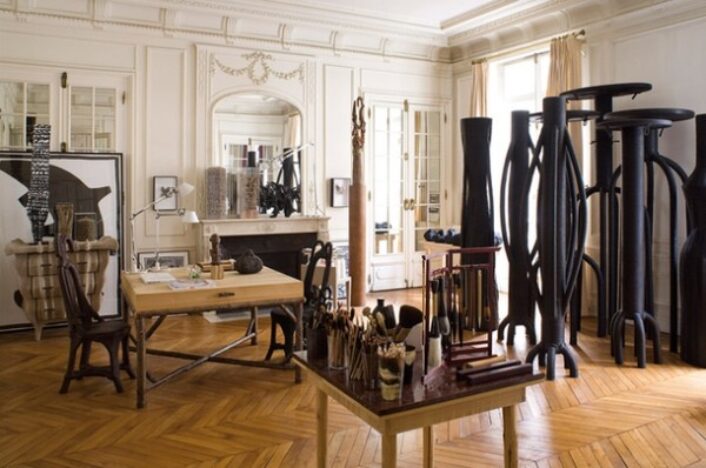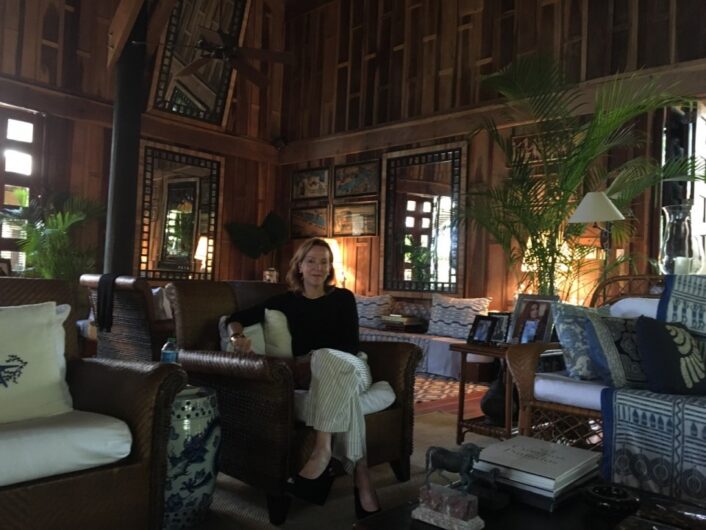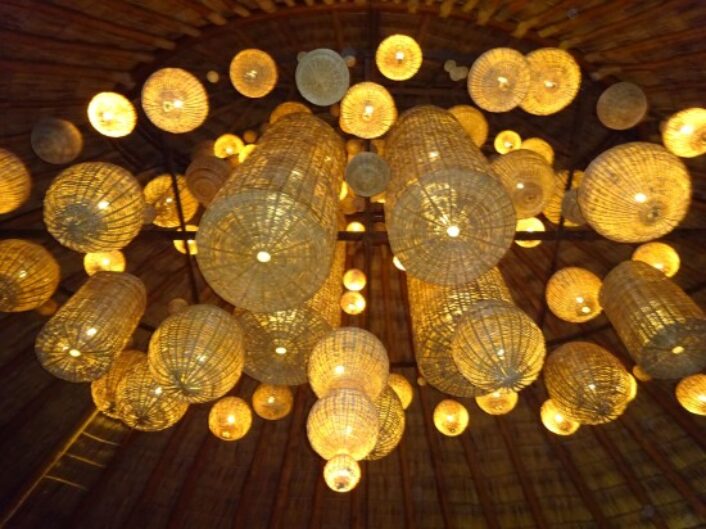Design
Soane Britain’s rattan
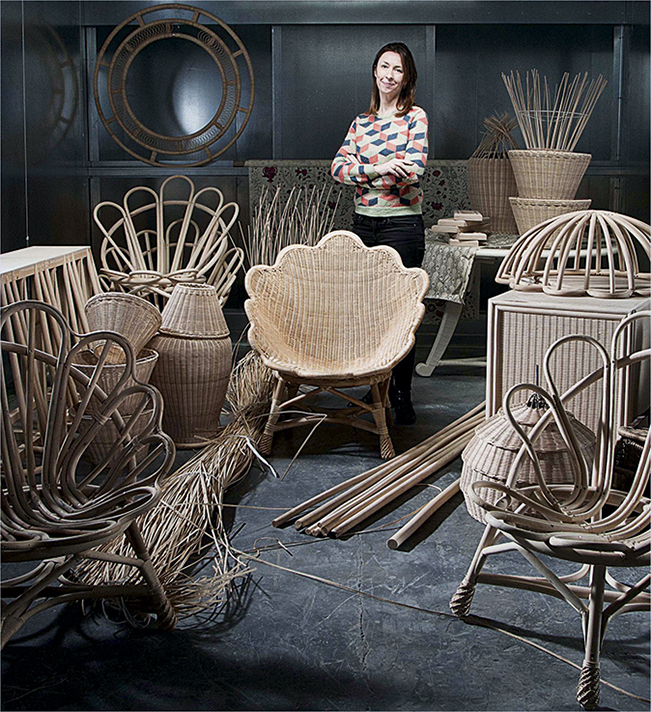
Lulu Lytle with some of her beloved rattan pieces.
Image courtesy of: Country Life
It was indeed a Christmas miracle in December of 2010 when Britain’s last remaining rattan furniture-making companies got a last minute reprieve. The highly specialized work was about to become a craft of the past for the last remaining “hold out” in Britain. Lulu Lytle, the owner of Soane, shot into action to save the Leicestershire workshop, Angraves, and preserve the jobs of the artisans employed by the storied manufacturer. She says (courtesy of an article by Tracey Minkin for Verenda), “Once a particular craft has gone, it will never come back. It needs protecting the same way the rhino does.”
The workshop had previously crafted some of her company’s most notable wicker pieces and has long been a staple in England’s wicker legacy. Founded more than a century ago, Angraves contributed to World War II’s war effort by crafting baskets for reconnaissance hot air balloon missions, seats for fighter airplanes, and cases for artillery shells.
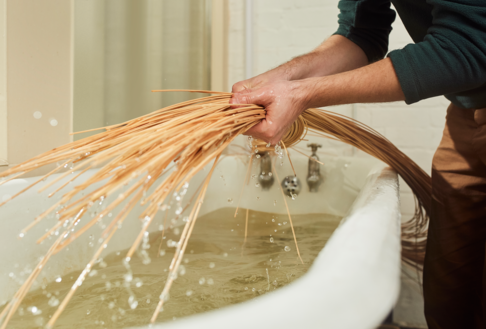
The thinner strands are soaked in water to make them more pliable before the weaving and wrapping (when the craftsmen bind them around cane frames) begins.
Image courtesy of: Veranda
Rattan’s popularity has not waned since it arrived in Europe via the Dutch East Indies. The furniture choice in the Far East because it was able to withstand the excessive heat and humidity of the tropics, it was also welcomed in the non air-conditioned houses of the time. Further enhancing its appeal is that the material can be stained, painted, and steam-bent into almost any desired shape. When Harry Peach founded the first British cane-furniture company in Leichester in 1907, it was vastly popular with Edwardian Society.
Unfortunately, rattan like other Far East goods became more and more accessible and less and less expensive… and thus, demand for the locally-made items dried up. Not convinced that going to the Far East to find rattan-weavers was the answer, Lytle used word-of-mouth recommendations to find Mick and Phil at Angraves. These two artisans had worked at the company for 39 years; Phil worked on hand-weaving the rattan and Mick worked on hand-bending the cane frames.
In her own words about how this all came about, Lytle told House & Garden, “I love rattan for its versatility, charm and sustainability. It always creates such a relaxed atmosphere and suits pretty much any interior. Having bought an Edwardian rattan sofa, which reputedly came from the Mountbatten house sale in Ireland, I decided to make a modern version for Soane but quickly realised how hard it was to find any rattan-weavers in Britain. Everyone said I would have to go to the Far East but I was determined that the sofa should be made in Britain. I eventually found the company where Mick and Phil worked through word-of-mouth recommendations. They’ve both developed remarkable skills and made our sofa brilliantly. After that initial order, they worked for us for eight years. Then suddenly the company went into administration. We had no inkling that anything was wrong but it turned out we were the only client who wanted traditional hand-weaving. It was such a shame because the firm would have celebrated its centenary this year.”
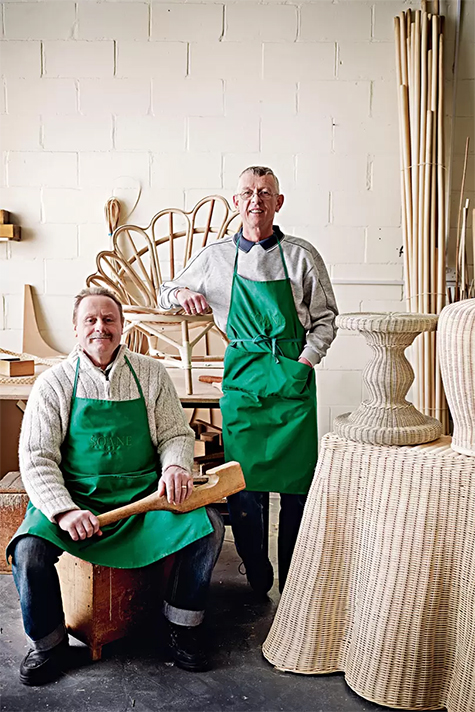
Mick and Phil in the workshop.
Image courtesy of: House & Garden, photographed by: Christian Barnett
Realizing the urgency in maintaining such a legacy, Lytle bought the manufacturer and brought it into her mix at Soane. Soane, known for it’s gorgeous British-made furniture, was immediately well-served with the addition. Presently, over 30 designs are in the collection and at least 30 more are in development.
Difficult and labor-intensive work, handmade rattan furniture is highly prized and a perfect complement to Soane’s existing pieces. Think about this… it takes three days to make a lampshade and a week to create a sofa. The company says that it recently completed a double bed with a decorative headboard… this task took a month to complete. But there is no substitute for quality! The machine-made rattan pieces are inferior both in looks and function; rattan items made by machines become extremely brittle because the canes are split in half for machining. Phil adds, “It doesn’t last.”
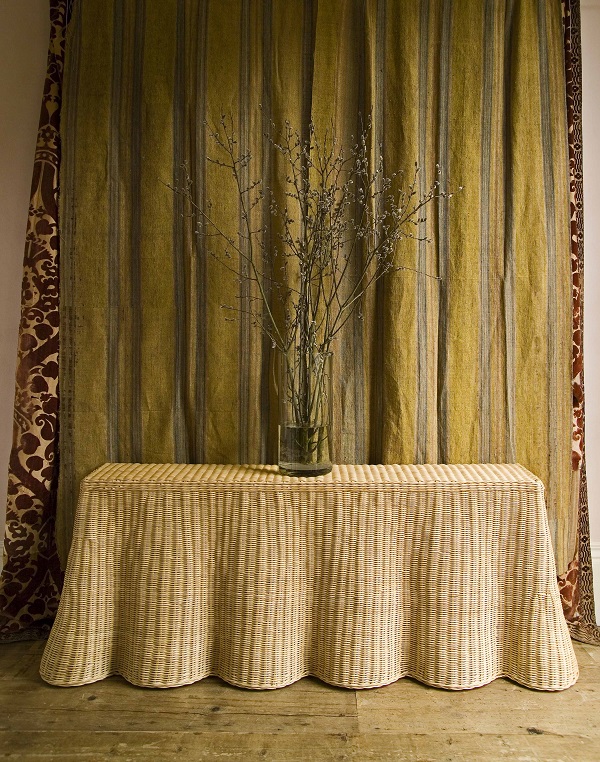
Today, part of rattan’s appeal is that it is environmentally friendly; much cheaper and faster growing than timber, the sustainable material aligns with the values of today’s generation. The plant was originally brought to England in the 19th-century by traders returning home from Fast East destinations such as China, Indonesia, and Japan.
Image courtesy of: The House Directory
It seems only natural that Lytle has such an interest in rattan. As a young child she collected wicker baskets; over time, she has accumulated quite a collection. Rather than displaying dolls, Lytle’s adored baskets lined her bedroom’s walls. She shared with Architectural Digest, ““Basket making is the most primitive of all arts, and it’s always held a huge allure. I think probably it is the very sculptural nature of it, and the very textual nature.”
As of last year, Soane was employing fifteen craftsmen to make their line of rattan furniture and lighting; and also bespoke requests. The owner says that buying the Angraves workshop was one of her proudest moments. She loves mixing the company’s designs with antique reconfigurations.
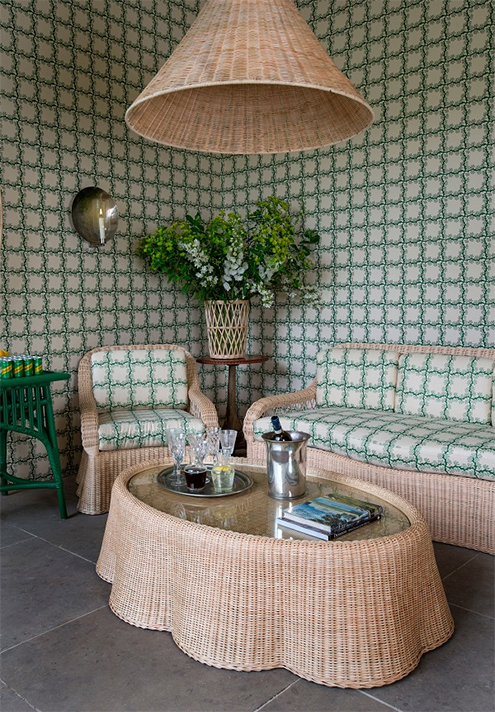
A gorgeous sitting area.
Image courtesy of: The House Directory
Soane’s dedicated “rattan brochure” is rich with stunning pieces the company has produced over the past decade. Lytle says, “We’ve also done a lot of bespoke work for clients who want one-off designs or ask us to copy vintage pieces from a photograph. What’s exciting is the huge range of possibilities. We’ve made a horseshoe-shape sofa to curve around a swimming pool, modern rattan beds and bar stools with patterned backs. And we’d relish orders for some really abstract designs such as sculptural screens and other decorative pieces.”
Recently, Lytle published a book titled, “Rattan- A World of Elegance and Charm.” She wanted to showcase the material’s qualities as it grows more and more popular in today’s interior design and fashion world. Whether you think of rattan in terms of tropical locales or sitting options from Impressionist paintings; it is a natural matter that is elegant, organic, and simple. There is good reason this sustainable material won the hearts of so many throughout time!
